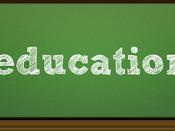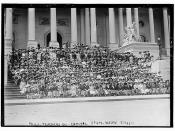Children from middle-class families generally are more successful in public schools than children from low-income families. Is the school system responsible for this problem, or is lower performance among low-income children a result of their home environment? The home environment has a big role in a child's education and if it is not supportive of the school environment, the student will not be as successful in school as the child whose home environment is supportive of the school's learning environment will. The typical public school teacher is a middle-class white female. The typical curricula, tests, and learning tools used in public schools were created by middle-class educators and are geared toward the needs of middle-class children. The middle-class teacher may not be able to communicate as well with the lower-class student as she could with a middle class student. A poor minority student may have trouble understanding English if English is not his/her first language or if English is not spoken in his/her home, and the teacher may have trouble understanding his/her broken English.
Different social classes also use different slang and voice inflections, and have ways of speaking that contain "hidden meanings". So the "language" a lower-class student uses at home may cause him to have trouble communicating with his middle-class teacher and classmates. In his book, Ain't No Makin' It, Jay MacLeod tells how a group of poor students in a particular school were able to relate to a teacher (Jimmy Sullivan) who spoke their "language." " 'It was cool, cuz like you walk in there...you talk to Jimmy, and you know Jimmy's real cool,' " said one of his students. Related to this "language barrier" that exists between low and middle social classes are behavior differences which affect teachers' perceptions and expectations of students. Poor and...


